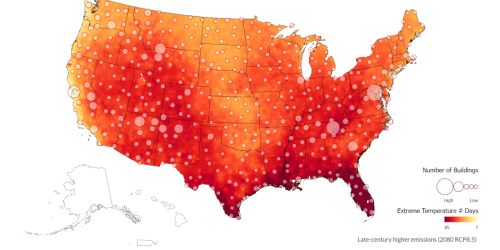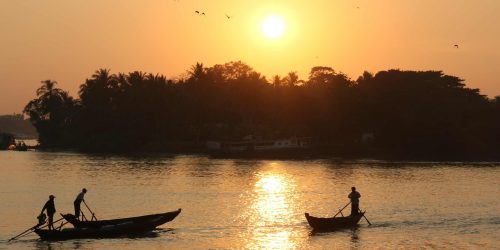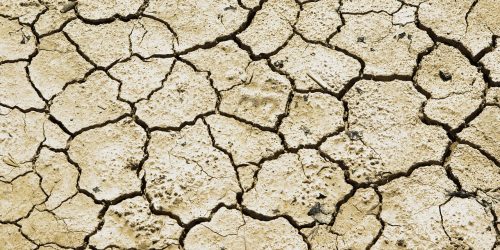By Amber Liggett, CPO CEE Division
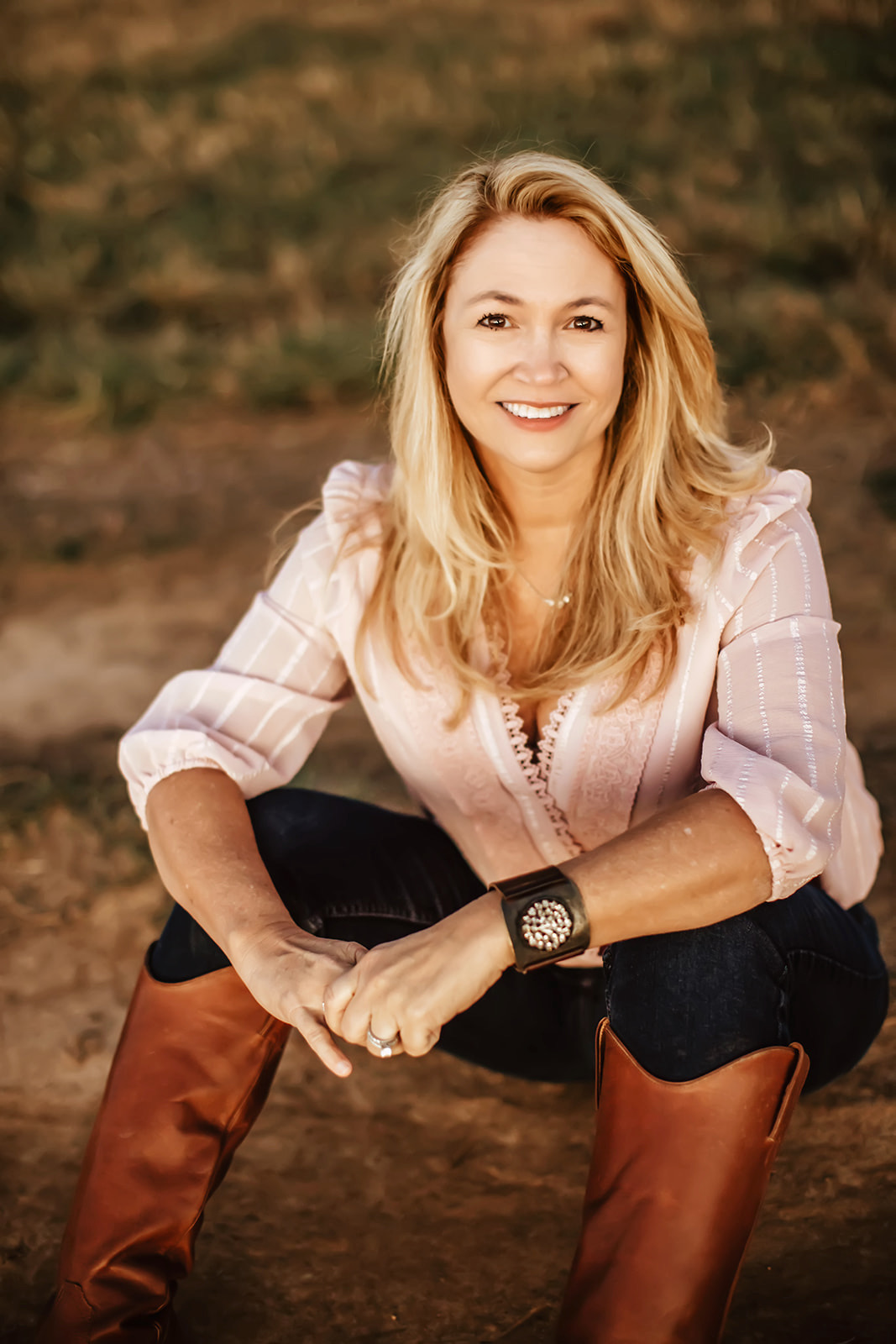
Image Credit: Lisa Vaughan
The article continues a series of interviews with NOAA Climate Program Office (CPO) employees and CPO-funded scientists in celebration of Women’s History Month.
Lisa Vaughan is a program manager for the NOAA Adaptation Sciences program and leads the international programs in CPO’s Climate and Societal Interactions Division. The Adaptation Sciences (AdSci) program is designed to advance the knowledge, methods, and frameworks needed to move society beyond incremental adaptation toward more widespread, connected, adaptive pathways, and resilience strategies with clear economic and societal co-benefits. AdSci’s international element works with partners in the public and private sector, in the U.S. and abroad, to enhance the knowledge, engagement, and capacity needed to foster adaptation and resilience in the face of a changing climate.
Lisa Vaughan’s program manager duties include designing and running interdisciplinary research competitions focused on understanding and advancing adaptation, and creating partnerships to support international resilience efforts. She forges interagency partnerships to undertake projects that support NOAA’s mission, and, at the same time, provide technical contributions to broader U.S. science diplomacy and climate policy efforts. To support these partnerships, she currently co-chairs two interagency working groups focused on international collaboration and climate services for adaptation. She is a thought leader in her field. Outside NOAA, Lisa enjoys traveling with her family, learning about other cultures. She also volunteers to raise awareness of the need for childhood cancer research, and manages a summer league dive team in Northern Virginia.
“Leadership occurs through formal and informal channels,” says Lisa. “I like to think of the word ‘lead’ first and foremost as a verb, and I see women leading the way in big and small ways every day in NOAA. You don’t have to be appointed as a manager or have a particular title to shape this agency and the impact it has on our stakeholders and partners.”
Read the full interview below.
How/when did you start working at NOAA? CPO?
When I first was looking for a job after graduation, NOAA was not even on my radar. I thought of it as a “traditional” science agency, and didn’t see myself there (although I had an old NOAA t-shirt that I wore so much that all of the color faded out!). I could have easily found myself at the U.S. Agency for International Development or the U.S. Department of State, given my interests. But I wound up getting a temporary federal position in what was then called the NOAA Office of Global Programs because there was a growing need for work on the human dimensions of climate, which is a global challenge.
What do you do at NOAA now?
I design and manage programs to help build the institutional relationships and technical knowledge to support the development of climate services and resilience in the U.S. and abroad. We do this by funding research and also developing collaborative projects that harness NOAA’s technical expertise. Many of these projects are being supported through a partnership with the U.S. Department of State. One such project is the Local 2030 Islands Network, which focuses on fostering climate resilience and sustainable development. Another of my current projects is on blue carbon. I often work with other parts of NOAA, such as the National Marine Protected Areas Center and the National Weather Service. I see one of my roles as helping to bring the different line offices in NOAA together around international resilience and adaptation efforts.
Can you tell me about your career path? How did you get into the sciences?
I was a military kid, moving around a great deal. Because my dad was in the Navy, we frequently lived by the water. We were stationed in Hawaii, California, and Rhode Island, although I graduated from high school here in the DC area. When I was in Hawaii in elementary school, our house backed up to Pearl Harbor, and we spent a lot of our time outside climbing around the coast, and looking for jellyfish and other creatures. When I was older, we lived in southern California, just a few blocks from the beach, and within easy driving distance of some incredible views of the Pacific Ocean and California’s majestic coastline. During my teen years, these views reminded me that nature is such a powerful force in our world, and helped me keep things in perspective in a lot of ways.
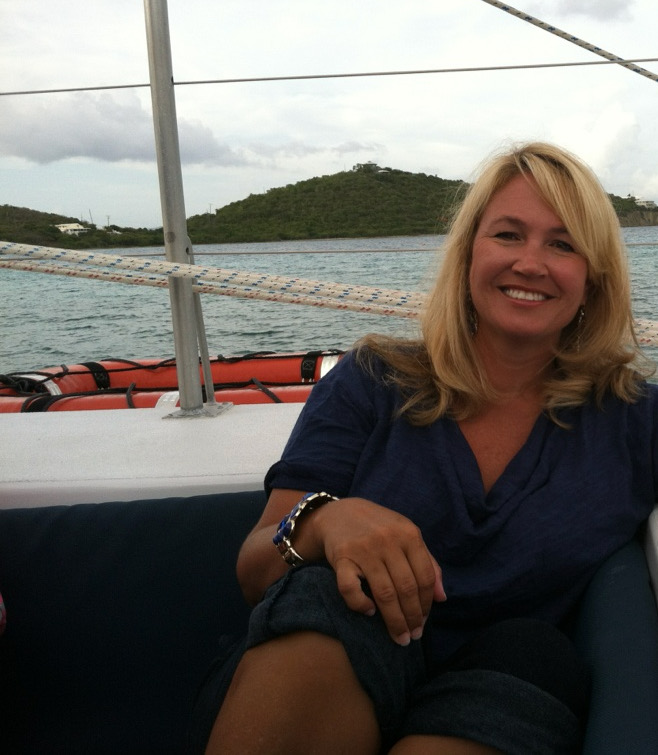

Lisa on a boat off the coast of St. John, U.S. Virgin Islands.
Image Credit: Lisa Vaughan
I was initially hired by NOAA to help build a network of research organizations in the Americas called the Inter-American Institute for Global Change Research (IAI). My role was focused on developing a social science research agenda for the network, so that the research would be useful for decision makers. The IAI is still around today, and I often partner with them in my projects, which is really rewarding for me. I thought I would be here for a year or two before returning to graduate school full-time. Then I wound up being so excited, honestly, about what I was learning on the job here at NOAA and feeling like I was having an impact. So I took kind of a non-traditional path and worked and traveled a lot for my job, doing a master’s degree while I was working. Thirty years later, I can’t see myself anywhere else but NOAA.
What do climate resilience and Climate-Ready Nation mean to you? What would you want people to know about NOAA’s work on climate resilience?
While we should continue to do everything we can to reduce greenhouse gas emissions, it is clear that climate change is happening, and affecting humans and ecosystems in complex and unprecedented ways. Dealing with these cascading impacts, some of which may be unforeseeable, requires an equally transformative change in the way we prepare for and respond to them. We need to build resilience into all aspects of our institutions, policies, and communities. Given its capabilities in science, stewardship, and service, NOAA plays a critical role in efforts to understand the climate system, share this knowledge with stakeholders and partners, and enhance resilience both within and outside of the U.S.
But we don’t do this in isolation–partners in the university, government, NGO, and private sector are absolutely critical to NOAA’s programs. Toward this end, I spend a lot of my time working with interagency and international partnerships on behalf of NOAA. Through those partnerships, we can identify some priorities where a better understanding or technical collaboration would help advance resilience in a particular place or sector. We then try to address some of the critical interdisciplinary research questions through our funding competitions. In 2023, for example, the Adaptation Sciences program is focusing on island resilience, which will address topics such as coastal management, fisheries, and nature-based solutions, including blue carbon. We’re using islands as an integrating framework for looking at how climate affects more than just one sector in a particular place, and how impacts–and adaptation actions– cascade across sectors.
We also work closely with our sister agencies across the government to support the President’s Emergency Plan for Adaptation and Resilience, or PREPARE. PREPARE is a U.S. government-wide effort to tackle the climate crisis through the development of climate information services and early warning systems, adaptation planning and implementation, and climate finance. NOAA has been identified as a key partner in this important initiative.
What has your experience been as a working mother?
As you can imagine, it’s challenging at times. I’ve been very lucky to be in NOAA, because it’s been a supportive environment, and has given me the flexibility that I needed at certain times in my life. Traveling is tough and working evenings is tough when you have young kids or when you have other commitments. (I do think it is important to remember that working women have many other types of commitments, not just children).
I work on a team that understands and respects that everyone has a life outside of the office, and that sometimes we need to put work on hold for a moment to deal with something pressing at home. There are times when one of us has to take time off or be called out for an appointment, or a child gets sick at school; on our team, everyone fills in for each other so the work continues as seamlessly as possible. As a working mom, this kind of environment has made all the difference in my life, enabling me to take time away, and then return part-time when my daughter was diagnosed with cancer. That is not a typical example, I know, but I do feel like NOAA overall is a supportive agency when it comes to that fundamental work-life challenge.
Are there any female mentors or influences that you have for your work? What are the characteristics of a good mentor?
That’s a good question. From my perspective, a good mentor seeks to understand your goals, interests, and strengths, and works to help you develop a pathway that fits for you, even if it is different from their own. To do this, a mentor really needs to be a good listener and see opportunities for you as they are emerging; a good mentor also challenges us to go beyond what we think we want or can do, and creates situations where we can test ourselves. I’ve been really lucky to work with some pretty amazing women at NOAA and have learned a great deal from both formal and informal mentors.
Margaret Davidson, who unfortunately passed away a few years ago, was a force of nature, and touched a lot of lives across this agency and the broader community. I was lucky enough to have her as a formal mentor through the NOAA Leadership Competencies Development Program (LCDP). I was working on CPO’s initial climate and coasts program at the time. As a result, I had a front row seat to many meetings where I was able to watch Margaret articulate a vision, and develop consensus around a path forward, often negotiating different opinions and interests so that everyone felt heard and valued.
The women I work with every day are some of the most important mentors I’ve had in my career. In reality, this list is pretty long, but there are two that I would call out here: Claudia Nierenberg and Nancy Beller-Simms. Claudia and Nancy have been great professional role models, but I have also learned a lot from them about being a working mother. Their kids are a few years older than mine, so I watched Claudia and Nancy manage their time and energy, seeking balance between their home and office lives.
One of the things I have concluded after going through this myself is that there is probably no such thing as a true “balance” (e.g., 50/50) between work and home life at any given point in time. There are moments where the emphasis is greater in one or the other sphere. But I think the key is to look at the balance between the two over the long term. If you think about it that way, it is possible to be present and contribute in both ways over your lifetime.
Is there any advice you’d like to share?
Thinking about Women’s History Month specifically, one piece of advice I would share is to trust your instinct and be comfortable using your own voice. I struggled with that a bit when I was younger, working in an office and scientific community that had fewer women in it than we do now, but I learned over time to trust my own judgment and speak up when needed.
It’s okay to be wrong. It’s okay to say something and then have it not be the perfect thing. That’s life and you just roll with it, but never be afraid to speak up and share your voice with others.
Special thanks to Lisa Vaughan for participating in this interview for Women’s History Month at NOAA



